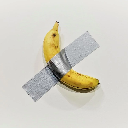-
 Bitcoin
Bitcoin $96,440.4167
-1.90% -
 Ethereum
Ethereum $2,690.5903
-2.45% -
 XRP
XRP $2.5889
-2.81% -
 Tether USDt
Tether USDt $0.9999
-0.06% -
 BNB
BNB $654.8775
0.10% -
 Solana
Solana $172.0925
-2.14% -
 USDC
USDC $1.0001
0.01% -
 Dogecoin
Dogecoin $0.2443
-3.72% -
 Cardano
Cardano $0.7664
-4.02% -
 TRON
TRON $0.2380
-4.11% -
 Chainlink
Chainlink $17.5412
-3.99% -
 Avalanche
Avalanche $25.1331
-0.31% -
 Sui
Sui $3.3388
-4.88% -
 Stellar
Stellar $0.3280
-3.42% -
 Litecoin
Litecoin $128.3458
-3.53% -
 Toncoin
Toncoin $3.6686
2.01% -
 Hedera
Hedera $0.2162
-1.94% -
 Shiba Inu
Shiba Inu $0.0...01525
-2.17% -
 UNUS SED LEO
UNUS SED LEO $9.7276
-0.21% -
 Hyperliquid
Hyperliquid $24.5558
-1.54% -
 Polkadot
Polkadot $5.1157
1.32% -
 MANTRA
MANTRA $7.5975
-0.22% -
 Bitcoin Cash
Bitcoin Cash $318.1092
-3.19% -
 Bitget Token
Bitget Token $4.9846
7.29% -
 Ethena USDe
Ethena USDe $0.9990
-0.08% -
 Dai
Dai $1.0000
-0.01% -
 Uniswap
Uniswap $8.8351
-4.88% -
 Monero
Monero $232.2775
-1.28% -
 NEAR Protocol
NEAR Protocol $3.4888
-1.57% -
 Pepe
Pepe $0.0...09261
-4.99%
How to use a blockchain browser
Blockchain browsers, such as Etherscan and BscScan, empower users to delve into blockchain data and transactions, providing insights into network activity for enthusiasts and developers alike.
Feb 21, 2025 at 09:13 pm

Key Points:
- Understanding Blockchain Browsers
- Selecting a Blockchain Browser
- Getting Started with a Blockchain Browser
- Exploring Blockchain Data and Transactions
- Advanced Features and Tools
- Security Considerations
How to Use a Blockchain Browser
Understanding Blockchain Browsers
Blockchain browsers, also known as blockchain explorers, are tools that enable users to interact with and explore data on a blockchain network. They allow users to view transaction history, block details, wallet addresses, and smart contract information. Blockchain browsers provide a comprehensive view of blockchain activity and are essential for developers, enthusiasts, and anyone interested in understanding how blockchain technology works.
Selecting a Blockchain Browser
Choosing the right blockchain browser depends on the specific blockchain network you wish to explore and the features you need. Some popular blockchain browsers include:
- Etherscan: For Ethereum and affiliated networks
- BscScan: For Binance Smart Chain (BSC)
- PolygonScan: For Polygon network
- Solana Explorer: For Solana network
- Avalanche Explorer: For Avalanche network
Each blockchain browser offers a unique set of features and tools tailored to the specific network it supports. Consider the following factors when selecting a browser:
- Network compatibility: Ensure the browser supports the blockchain network you are interested in.
- Features: Compare the features offered by different browsers, such as transaction tracking, token details, wallet analysis, and smart contract verification.
- User interface: Choose a browser with an intuitive and user-friendly interface that meets your needs.
Getting Started with a Blockchain Browser
Once you have selected a blockchain browser, you can start exploring blockchain data by following these steps:
- Open the browser: Navigate to the website or app of the blockchain browser.
- Select the network: Choose the blockchain network you want to explore from the available options.
- Explore the interface: Familiarize yourself with the menu, search bar, and other features of the browser.
Exploring Blockchain Data and Transactions
Blockchain browsers enable you to explore various aspects of blockchain data and transactions:
- Transaction history: View a chronological list of transactions that have occurred on the network. You can filter transactions by address, block, or amount.
- Block details: Examine the contents of specific blocks, including transaction hashes, timestamps, and block rewards.
- Wallet addresses: Track the activity of specific wallet addresses, such as incoming and outgoing transactions, token balances, and transaction history.
- Smart contracts: Analyze the code and activity of smart contracts, view transaction traces, and check for potential vulnerabilities.
Advanced Features and Tools
Blockchain browsers offer advanced features and tools for in-depth blockchain analysis:
- Token tracking: Track the flow of specific tokens across the network, including their prices, supply, and distribution.
- API access: Integrate blockchain data into applications or scripts using the browser's API.
- Whale watching: Monitor the activities of large token holders and track their trades.
- NFT exploration: View NFT collections, examine their metadata, and track their ownership history.
Security Considerations
When using a blockchain browser, it is important to prioritize security:
- Use a secure browser: Use a reputable and up-to-date browser with security features enabled.
- Protect your private keys: Never enter your private keys or seed phrases into a blockchain browser.
- Beware of phishing attempts: Be cautious of suspicious links or emails that could attempt to steal your credentials.
- Review browser permissions: Grant only the necessary permissions to the blockchain browser.
FAQs
- Q: What is the difference between a blockchain browser and a cryptocurrency wallet?
A: A blockchain browser allows you to explore blockchain data without interacting directly with your cryptocurrency assets. A cryptocurrency wallet, on the other hand, is designed to store and manage your private keys and cryptocurrency funds. - Q: Can I use a blockchain browser to mine cryptocurrency?
A: No, blockchain browsers are not mining tools. Mining requires specialized hardware and software designed for solving complex mathematical problems that verify and add new transactions to the blockchain. - Q: Is it safe to enter my private key into a blockchain browser?
A: No, it is never safe to enter your private key or seed phrase into a blockchain browser. Private keys should be kept confidential and securely stored offline or in a reputable hardware wallet.
Disclaimer:info@kdj.com
The information provided is not trading advice. kdj.com does not assume any responsibility for any investments made based on the information provided in this article. Cryptocurrencies are highly volatile and it is highly recommended that you invest with caution after thorough research!
If you believe that the content used on this website infringes your copyright, please contact us immediately (info@kdj.com) and we will delete it promptly.
- 5 Best Cryptos to Buy Today: BTFD Coin, Dogecoin, Goatseus Maximus, Baby Doge Coin, Pudgy Penguins
- 2025-02-22 16:30:25
- New IP-Focused Altcoin Surges 164% in First Week Amid Launch of Research Collaboration With Stanford University
- 2025-02-22 16:30:25
- Top Crypto Projects to Invest in February 2025: Qubetics, Render, Solana, and XRP
- 2025-02-22 16:30:25
- Discover the Future of Digital Currency: Insights into SEI, EOS, and the Revolutionary Qubetics
- 2025-02-22 16:30:25
- Bybit Hit By Colossal $1.46 Billion Hack, Biggest Crypto Theft In History
- 2025-02-22 16:30:25
- BTFD Coin: The Ultimate Play for Smart Investors
- 2025-02-22 16:30:25
Related knowledge

What are cold storage and hot storage? Which one is safer?
Feb 22,2025 at 03:18pm
Key Points:Cold storage and hot storage are two methods of storing cryptocurrencies.Cold storage involves storing cryptocurrencies offline, while hot storage involves storing them online.Cold storage is generally considered safer than hot storage, as it is not connected to the internet and is therefore less susceptible to hacking.Cold StorageCold storag...

How to synchronize wallets in multiple devices and browsers
Feb 22,2025 at 09:18am
Key Points:Understand the different types of cryptocurrency wallets and their synchronization capabilities.Learn how to synchronize hardware wallets with multiple devices.Discover the steps involved in synchronizing software wallets across platforms.Explore the options for synchronizing mobile wallets on different devices.Gain insight into browser exten...
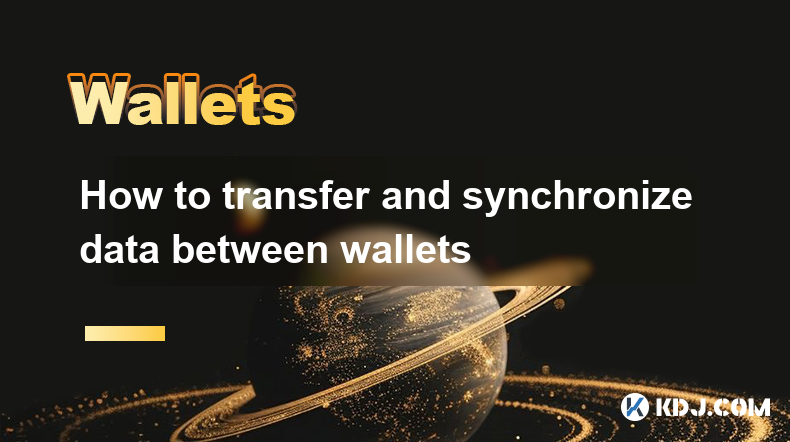
How to transfer and synchronize data between wallets
Feb 21,2025 at 12:25pm
Key Points:Understanding different wallet types and their capabilitiesIdentifying similarities and differences between walletsExploring options for transferring and synchronizing dataEnsuring data security and integrity during transferAddressing common challenges and troubleshooting tipsHow to Transfer and Synchronize Data Between Cryptocurrency Wallets...
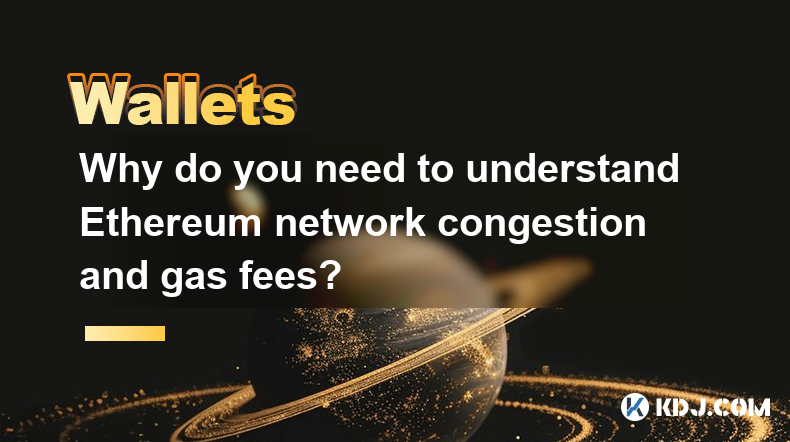
Why do you need to understand Ethereum network congestion and gas fees?
Feb 21,2025 at 04:48am
Key PointsUnderstanding Ethereum Network Congestion and Gas FeesGas Fees ExplainedFactors Affecting Network CongestionStrategies for Minimizing Gas FeesImpact of Ethereum UpgradesUnderstanding Ethereum Network Congestion and Gas FeesThe Ethereum network is a decentralized platform that hosts a vast ecosystem of decentralized applications (dApps), non-fu...
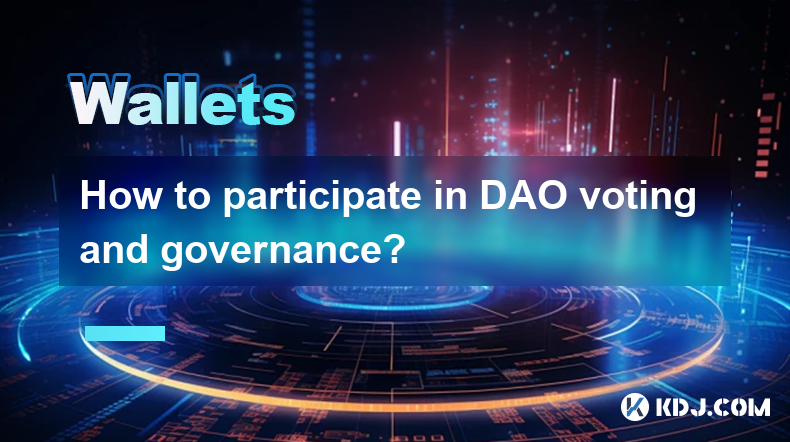
How to participate in DAO voting and governance?
Feb 21,2025 at 03:42pm
Key Points:Overview of DAO Voting and GovernanceUnderstanding DAO Structures and MembershipRole of DAO Tokens and Voting RightsParticipating in Voting and Proposal SubmissionLeveraging Governance Tools and PlatformsImpact of Voting Participation on DAO OutcomesBest Practices for Effective DAO GovernanceHow to Participate in DAO Voting and Governance1. U...
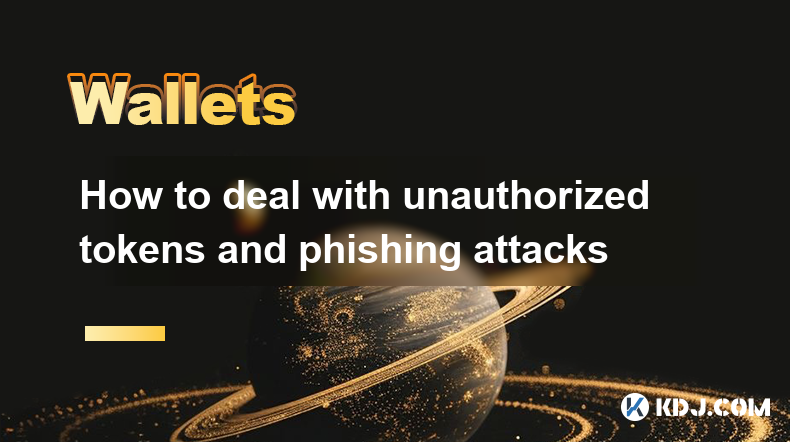
How to deal with unauthorized tokens and phishing attacks
Feb 21,2025 at 05:25am
Dealing with Unauthorized Tokens and Phishing Attacks in the Cryptocurrency CircleThe cryptocurrency market is rife with potential dangers, including unauthorized tokens and phishing attacks. To protect yourself from these threats, it's crucial to take proactive measures and be vigilant in your online activities.Key Points:Unauthorized Tokens: Tokens cr...

What are cold storage and hot storage? Which one is safer?
Feb 22,2025 at 03:18pm
Key Points:Cold storage and hot storage are two methods of storing cryptocurrencies.Cold storage involves storing cryptocurrencies offline, while hot storage involves storing them online.Cold storage is generally considered safer than hot storage, as it is not connected to the internet and is therefore less susceptible to hacking.Cold StorageCold storag...

How to synchronize wallets in multiple devices and browsers
Feb 22,2025 at 09:18am
Key Points:Understand the different types of cryptocurrency wallets and their synchronization capabilities.Learn how to synchronize hardware wallets with multiple devices.Discover the steps involved in synchronizing software wallets across platforms.Explore the options for synchronizing mobile wallets on different devices.Gain insight into browser exten...

How to transfer and synchronize data between wallets
Feb 21,2025 at 12:25pm
Key Points:Understanding different wallet types and their capabilitiesIdentifying similarities and differences between walletsExploring options for transferring and synchronizing dataEnsuring data security and integrity during transferAddressing common challenges and troubleshooting tipsHow to Transfer and Synchronize Data Between Cryptocurrency Wallets...

Why do you need to understand Ethereum network congestion and gas fees?
Feb 21,2025 at 04:48am
Key PointsUnderstanding Ethereum Network Congestion and Gas FeesGas Fees ExplainedFactors Affecting Network CongestionStrategies for Minimizing Gas FeesImpact of Ethereum UpgradesUnderstanding Ethereum Network Congestion and Gas FeesThe Ethereum network is a decentralized platform that hosts a vast ecosystem of decentralized applications (dApps), non-fu...

How to participate in DAO voting and governance?
Feb 21,2025 at 03:42pm
Key Points:Overview of DAO Voting and GovernanceUnderstanding DAO Structures and MembershipRole of DAO Tokens and Voting RightsParticipating in Voting and Proposal SubmissionLeveraging Governance Tools and PlatformsImpact of Voting Participation on DAO OutcomesBest Practices for Effective DAO GovernanceHow to Participate in DAO Voting and Governance1. U...

How to deal with unauthorized tokens and phishing attacks
Feb 21,2025 at 05:25am
Dealing with Unauthorized Tokens and Phishing Attacks in the Cryptocurrency CircleThe cryptocurrency market is rife with potential dangers, including unauthorized tokens and phishing attacks. To protect yourself from these threats, it's crucial to take proactive measures and be vigilant in your online activities.Key Points:Unauthorized Tokens: Tokens cr...
See all articles














![BONK The Meme Coin MORE THAN ORDINARY [DOG] on Solana BONK The Meme Coin MORE THAN ORDINARY [DOG] on Solana](/uploads/2025/02/22/cryptocurrencies-news/videos/bonk-meme-coin-ordinary-dog-solana/image-1.jpg)




























































